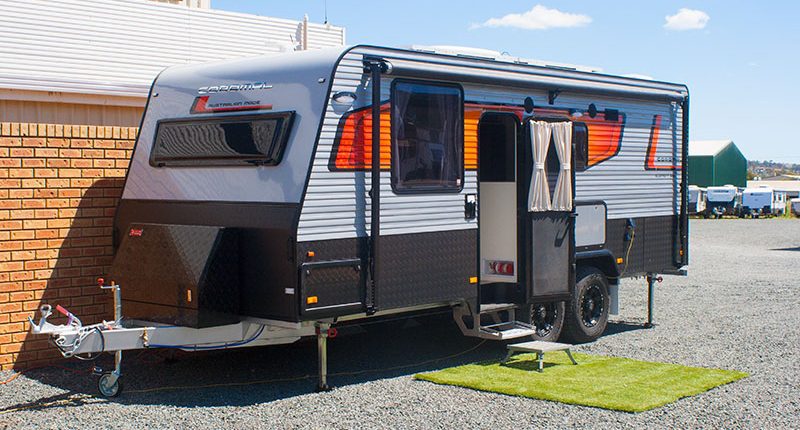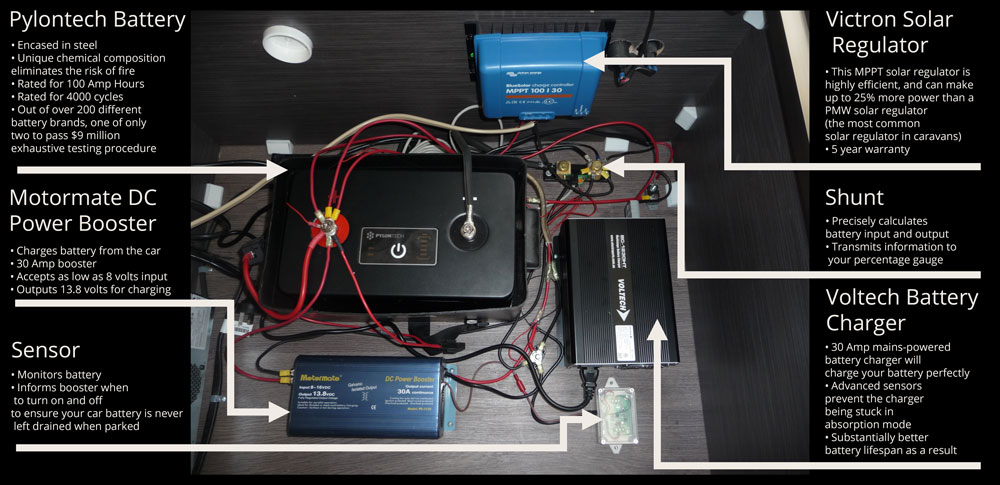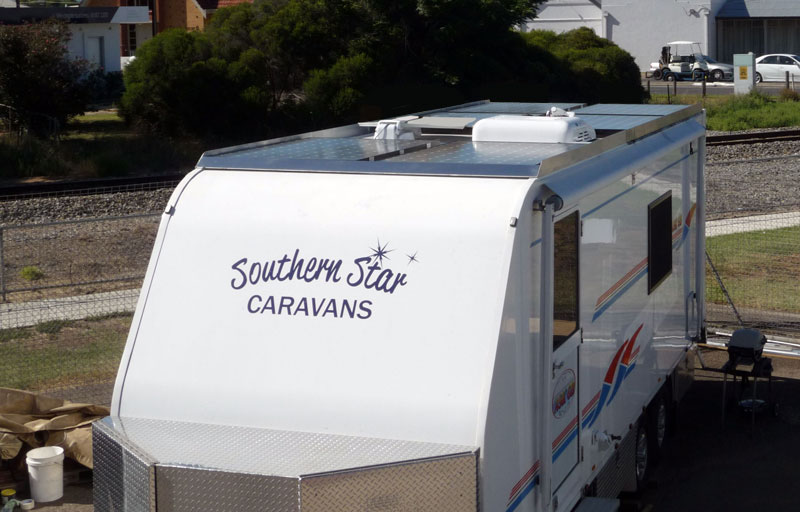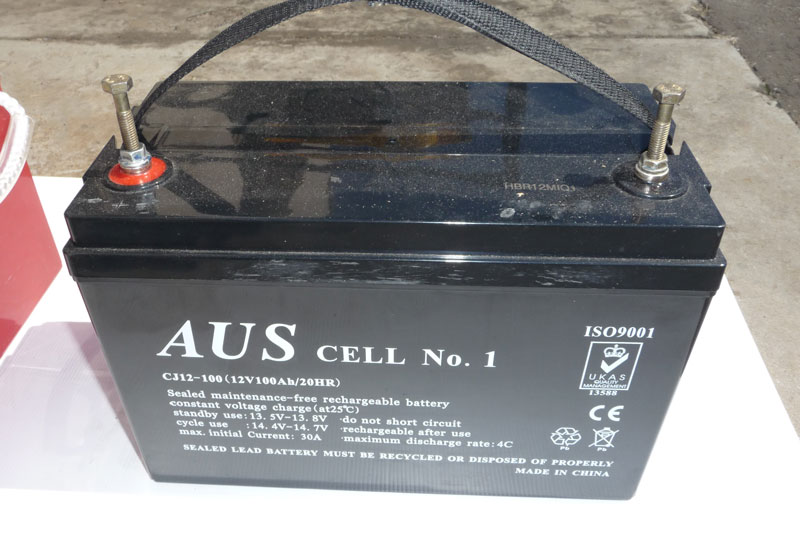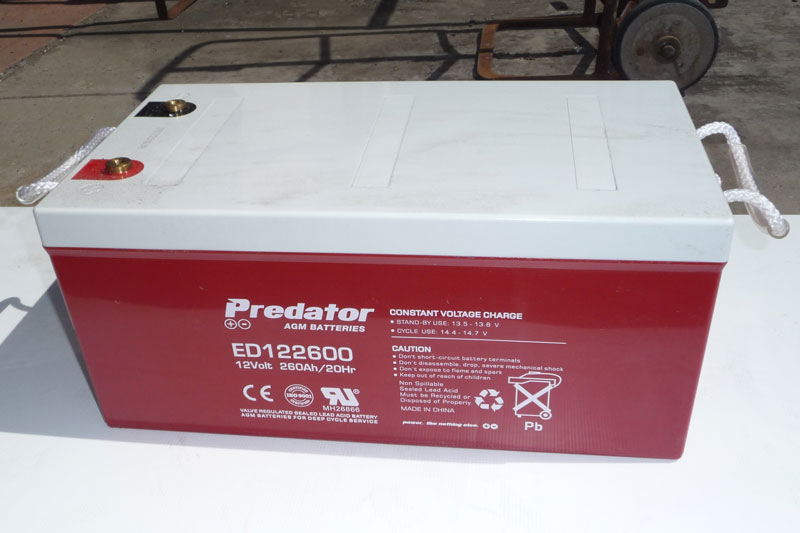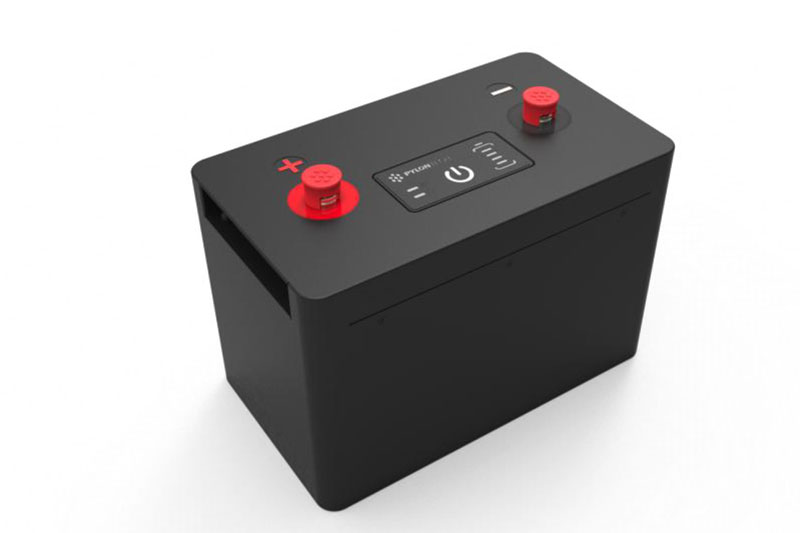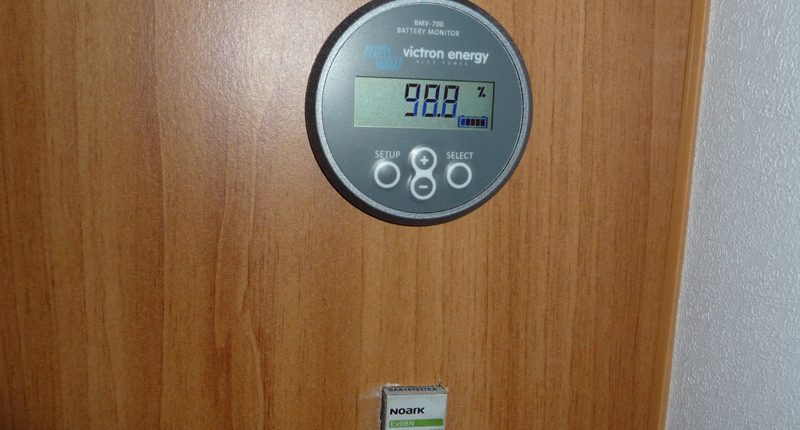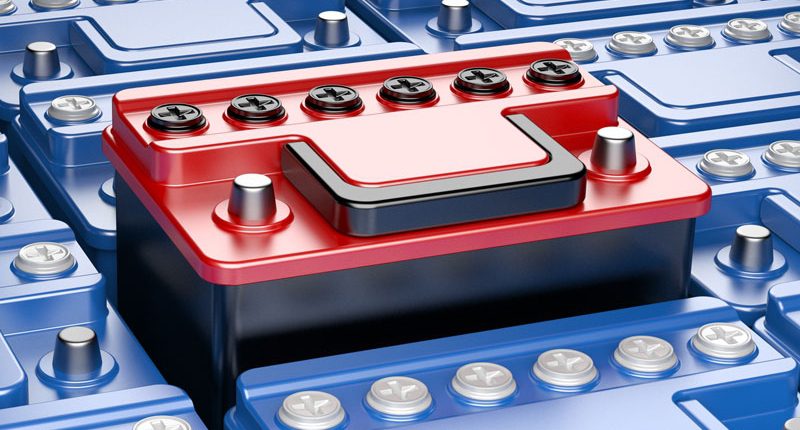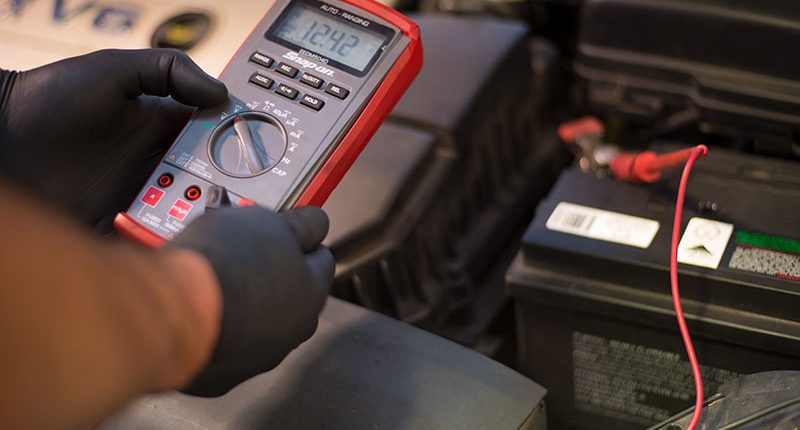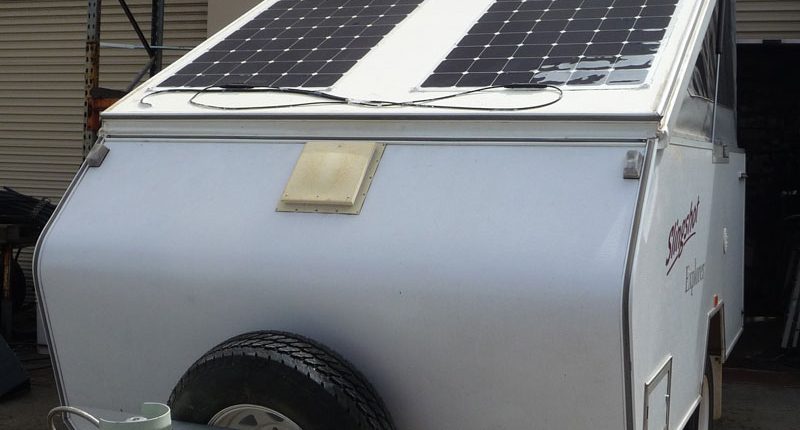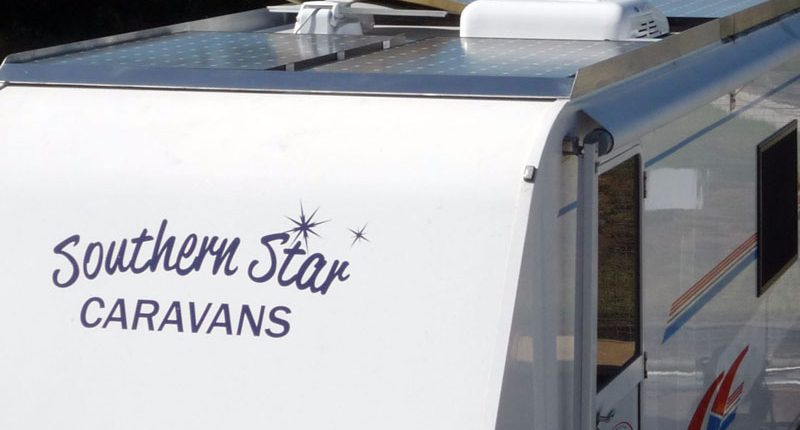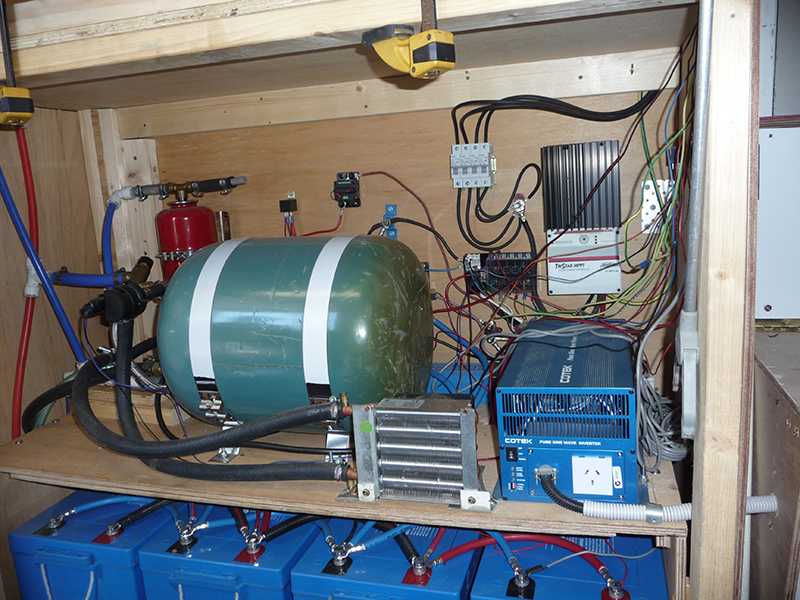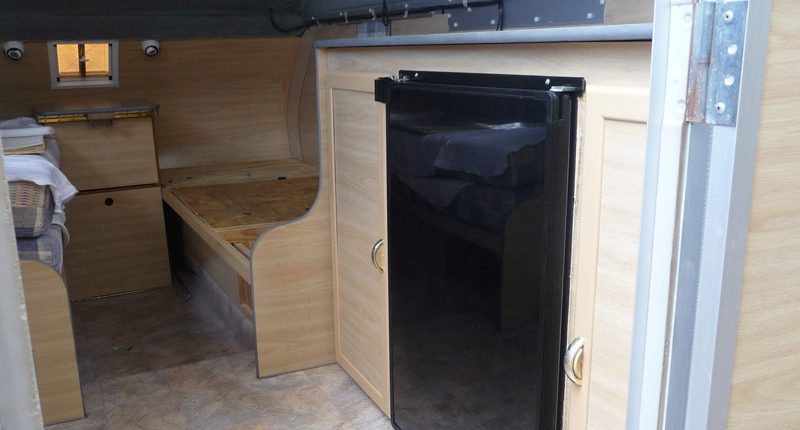Our Services
1st Van Upgrade
The 1st upgrade we look at doing with caravans and motorhomes is to modify the wiring so the customer can arrive at their destination with a full battery and cold fridge.
Van owners who travel with standard wiring usually do not enjoy the above benefits.
Reason for poor performance with standard wiring – many vans are wired such that the three-way fridge gets its power from the starter battery of the tow vehicle which is transferred to the fridge via either the seven pin trailer plug or via an Anderson plug.
There is a large voltage drop in the long cable from car starter battery to the van fridge.
We have often seen three-way fridges which call for 27A on the specification plate that are in fact only getting 4-5 Amps. This is why they don’t cool very well when driving.
After our modifications the same fridge will draw 26-27A and thus will cool correctly.
In addition, there is no chance of your cars starter battery being run flat after stopping for lunch or such with our modification.
A more extensive modification could involve fitting one of our 12V 3kw refrigerated air conditioners so that your van can also arrive at your destination pleasantly cool. (12V air conditioning can be run whilst driving).
395W shade-tolerant panel
Our demonstration model, which measures up to 112 amps (DC) coming from solar to the van batteries
Solar
For caravan and motorhome owners who enjoy free camping, having solar can be of a great benefit. There are two main ways of having solar configured with your van.
The folding panel
A solar panel that you place outside and away from your van, designed to capture the sun’s rays. This provides the advantage of having your van parked in the shade, while the panel is out in the sun.
However, if you leave your van to go for a walk and leave your panel out, it might go for a walk as well.
Many folding solar panels have a regulator attached to the back of the panel. This is for convenience but is not sensible from a technical point of view. As the panel will produce around 21V, the regulator on the back will cuts this down to, say, 13V. The power is then sent to the van battery via a rather long 5-10m cable and a set of alligator clips. The voltage drop in this long cable results in your battery not being charged properly.
To help with this we can modify your folding panel by removing the usually cheap and inefficient regulator and replacing it with a 30% more efficient mppt solar regulator, which we mount right next to the battery. Now your battery gets a proper charge.
Fixed roof panels
When solar panels are fixed to the roof of your van, they are not likely to be stolen or damaged. An unexpected advantage of fixing solar panels to your van roof is that your roof is put in shade as if under a carport.
The secret to being able to free camp with all your van’s facilities running, is having enough power available at all times. This can be achieved by having powerful solar and larger batteries.
At Nimbus Engineering, our solar panels are the highest efficiency made in the world. We can assist you with installing panels of all sizes, including:
- 100w-250w panels – flexible
- 360w panels
- 400w panel
- 395w panels – shade-tolerant
We have also designed and obtained approval for our solar mounting system from Sunpower Corporation in America. This system ensures no roof leakage and no cracking of panels on rough roads or from mounting on an undulating roof surface. The mounts incorporate isolation rubbers.
- SunPower panels outperform others early in the morning, late in the day, and on cloudy days.
- They effectively absorb different wavelengths of light to generate more electricity.
- They perform better at high temperatures than others. As they’re more efficient at converting light into electricity (and not heat), the hotter it gets outside, the better they perform.
- They maintain efficiency during initial break-in. Most panels lose 3% efficiency when first exposed to sunlight. This is not the case for SunPower panels.
These panels are not only highly efficient but also make power from infra-red and ultra violet rays. Infra-red is a long wavelength which comes over the horizon first and disappears last at the end of the day. Ultraviolet rays bounce around under the clouds on cloudy days. Note: other brand panels don’t absorb power from either of the above mentioned wavelengths and therefore cannot provide as much power as our panels.
We have numerous customers with vans and motor homes who have our solar panels and never need to plug into mains power or run a generator.
For all solar panel installations and repairs, please give us a call today!
Batteries
Caravan manufacturers like to stock only one size of battery and generally it’s the 100Ah variety. That is not for your benefit, but for theirs. If you want 200Ah they will give you two 100Ah batteries.
If you have multiple batteries they must all be the same make, model, size and age. This is to ensure they all work in unison and do not fight with each other.
Even if the above is followed correctly, over time your batteries will still develop differences and consequentially have a shortened life.
Nimbus Engineering can provide high quality single 100Ah, 200Ah or 300Ah AGM batteries. A single battery will not fight with itself, so you will benefit from a longer life with a large single battery.
We also stock Pylontech lithium batteries, which are encased in steel and use unique chemistry which means there’s no chance of a fire. A company in Canberra spent 9 million dollars testing over 200 different lithium battery company products, over a 14 month, 8 stage test. Pylontech and one other company were the only 2 that passed all of these tests. We’ve also conducted independent tests here at Nimbus Engineering, and we have found that they provide 132 amp hours (rated for 100 amp hours), and last for 4000 cycles, compared to the usual 1000 cycles.
For all battery installations and quotes, please give us a call today!
If your caravan or motorhome has multiple batteries, they would normally be connected in parallel to give 12V. There are two different ways of wiring batteries in parallel that will both give 12V. Both methods work, but one method gives better battery capacity and a longer life. We have never seen a standard van with multiple batteries wired using the better method. Our own Unimog motorhome demonstration vehicle has two 300Ah batteries wired in this fashion.
We can modify your wiring to the better method, which will pay for itself in time. (100ah battery and 300ah battery pic) Our own demonstration model has two 300Ah batteries wired in this fashion.
State Of Battery
A basic way to know the level of your battery is to measure voltage. There are many different voltmeters in the market place, but cheap ones are inaccurate.
At Nimbus Engineering we have tested and many different batteries over the years and have the best tools to do the job. We understand that an accurate reader is needed as battery voltage does not change much as it discharges.
However, there is a more sophisticated way to measure battery capacity. An Amp hour gauge and shunt can indicate battery percentage very accurately.
If you have solar on the roof of your van, the battery weight can climb back to 80% in half an hour and 84% in the next half hour. In other words, the gauge behaves in much the same way as the fuel gauge in your 4wd.
This is very useful information to have as it allows you to try and keep your battery above 50%. And will allow you to enjoy the benefit of an improved battery life.
For all battery measurement and testing services, please get in touch with us today!
Auxiliary Battery Charging
Whether it’s for a 4WD, caravan, motorhome or boat, an auxiliary or house battery is usually required to power a fridge, inverter, microwave, TV and many other creature comforts of home. Ideally it should be charged whilst motoring.
Traditionally a VSR, or voltage sensing relay, was used to send power to the auxiliary battery. It would work, but would never charge the battery quickly, or to full capacity. DC-DC boosters started to be sold by companies like Redarc or CTekabout 15 years ago. At Nimbus we’ve been using DC-DC boosters for about 20 years. There are now many brands of DC-DC boosters available in the market place.
Contrary to old fashioned VSR systems, the DC-DC booster concept does charge quickly and completely. With many years of experience using boosters, we have developed our own unique DC-DC booster. Our concept will work perfectly on older vehicles with standard alternators, such as GQ Patrols, 80 series Landcruisers, and equally well in more modern models of 4WDs (which commonly feature computer-controlled alternators.)
Most other brands of DC-DC boosters require a sensing wire to be connected to the ignition. With modern vehicles; our unit is easier to install, not requiring any wire to be connected to the ignition. It therefore has no chance of voiding your new car warrant. Our unit decides when to turn on and off by itself.
Features of our DC-DC booster:
- Can be mounted under the bonnet (TP68 rating)
- Should always be mounted next to the auxiliary battery, no matter how far from the starter battery in your 4WD, van or boat.
- If your van has solar which as topped the battery up, our booster will not turn on. If the auxiliary battery starts to lose voltage (eg. in cloud cover), the booster will turn on and take over automatically.
- If you have a large battery bank (eg. in the range of 600Ah), 3 or 4 of our boosters can be connected in parallel. They will work together until the battery fills, and drop back to 1 booster to keep it topped up.
- In a 4WD with a fridge removed, when you are driving to work and back, many boosters will your overcharge and gas your auxiliary battery by sitting on Float Voltage for hours, with nothing coming out of the auxiliary battery. Our booster by comparison will automatically turn off if it finds the auxiliary battery is full. This way your auxiliary battery will not suffer from auxiliary charging when driving to and from work. We consider our DC-DC booster to be very versatile and most suitable for modern vehicles, caravans, motorhomes and boats, all which could be with or without solar.
Battery Chargers
There are many battery chargers in the marketplace that are fitted in caravans. However they are normally best used to charge a battery on a bench in the shed or perhaps in a boat in your backyard.
Most of these chargers have a problem when charging your caravan battery whilst in a caravan park. During charging they often get stuck in absorption mode, which if left unchecked can lead to cooking the battery.
At Nimbus Engineering, we fit a charger that does not have this problem. They are available in 30A, 40A and even 60A. They have an additional feature which reduces float voltage by 4%, so it can look after your battery in storage without gassing it.
When left connected our chargers will finish charging the battery and after 72 hours of not detecting any electrical activity will reduce its float voltage by 4%.
This means it automatically reduces down below the gassing voltage, a process which re-mixes the electrolyte solution. And after 21 days of storage, the battery charger will start a new cycle and then sit back below the gassing voltage again.
Our charger will always ensure that you are provided with a fast and safe charge when touring and that your battery will benefit from a long useful life and remain in great condition.
If you caravan or motorhome needs a new battery charger, please give us a call today!
Inverters
Modern inverters have caused a quiet revolution in the way that we live with independent power systems, by providing silent 240V AC electricity anywhere, any time from a 12V DC battery.
Inverters transform the DC electricity stored in your batteries into standard household 240V power. Thus, you can run 240V appliances from the DC battery system in your 4WD, boat, caravan or motorhome.
There are two main types of inverters available today.
Modified Sine Wave
Modified Sine Wave inverters are the cheaper of the two types. They can be safely used on resistive loads like a small heater or an electric drill without variable speed control. If this type is used on electric devices like, variable speed drill, laptop, TV, CPap, microwave, etc, damage can be caused to any of these items. We do not sell this type of inverter.
True Sine Wave
These inverters are the most sophisticated inverters available on the market today.
They are designed to produce ac power which is equal or better than your mains power at home. With correct sizing of the inverter any equipment you use at home can be run from a True Sine Wave inverter.
Safety Note
At Nimbus Engineering we point out to customers that safety is paramount with inverters that make 240V ac power. There is an inverter sold in Australia that is potentially very dangerous. If we see one of these in your setup we explain the safety issue. Our double insulated inverters do not have the above problem.
Special set up we can provide in caravans
When you plug your van into outside power all your 240v appliances work, example: toaster, microwave, battery charger, TV, Aircon GPO’s.
We can install a 2,500w or 3,500w inverter in your van in such a way that when you are free camping you can also turn on any of the 240V appliances mentioned above.
These inverters have an inbuilt change over switch which when integrated with your circuit provides ac power to all power points in the van when free camping.
You are given an Electrical Certificate of Compliance when we set this system up in your van.
Powering Sleep Apnea machines
When people have sleep apnea machines they need to be powered reliably.
If you have a 240V unit we can supply a small inverter, separate from the large one to run your other appliances.
Reason: Large inverters when turned on but doing nothing can self-consume up to 3.6A (as much as a 12V fridge). A smaller 300w inverter to run your sleep apnea machine will only self-consume 0.3A, so will not deplete your house battery.
If you have a 12V sleep apnea machine, it will be supplied with a wall cigarette lighter plug. This is not a reliable connection and as this machine is there to ensure you wake up in the morning, we fix this problem by removing the cigarette plug and replace with a German Din Plug and Socket.
Thus you can then be assured the unit will be powered the whole night through.
The small inverter is also good for charging small items like torches, laptops, etc, rather than using your large inverter for the small jobs.
Air Conditioning
Many caravans these days are air conditioned with units that require a 240V AC power supply. This means that the van needs to be based in a caravan park, or have an appropriately sized generator on board, one that is capable of producing approximately 3,500w of power.
Mains powered air conditioners do have problems in many circumstances.
- Many national parks ban generators.
- Many people who don’t have a generator “hate” people who do.
- If you run your air conditioning through an inverter system, the load could be as high as a 119A from your 12V battery
As an alternative, Nimbus Engineering can provide you with a 3kw refrigerated air conditioner. This unit can run directly from your 12v battery bank and will only draw 71A from your battery bank.
Our 3Kw unit is generally more powerful than any of the 250v units, and draws less power. You can see it on the caravan pictured.
With twin boosters’ setup, you are able to run your air conditioning running whilst driving, and the van will be cool when you stop for lunch.
For all air conditioning inquiries, please get in touch with our friendly and knowledgeable team today!
Hot Water
Hot water is normally provided in one of three common ways: diesel, 240V AC or gas. However, in your motorhome we can provide a unique method which requires none of these.
At Nimbus Engineering, we have designed and built a calorifier system which makes domestic hot water as you drive. These units are available with hot water capabilities from 10 litres to 50 litres.
As you drive your motorhome, our calorifier hot water system will reach a temperature of around 90°C. The calorifier has a mixing valve, so you specify your exact temperature, and the system will create it by mixing 90° and cold water. The calorifier also has 12v 300w electric element and a 700w 240v electric element which can be used to keep the water hot when stationary.
We can also supply a special hot water pump and heat exchanger, which provides warm air to your motorhome on cold nights. A temperature gauge can be fitted to keep you informed as to how much hot water you have.
For all hot water service installations, please give us a call today!
Fridges
90% of caravans have three-way fridges. Which means that 10% of caravans don’t. The 10% is comprised people who have learnt over the years that a 12V fridge is far superior.
At Nimbus Engineering we do the research for you. We supply reliable and high- performance fridges for your 4WD, boat or caravan.
If you are heading into the heat of our Australian deserts, or perhaps you have experienced a fridge not coping with the temperatures Australia can impose, we have the solution.
If you are setting up a caravan or motorhome, we can provide a 12V upright fridge with performance that exceeds that of the commonly used three-way fridges. Our 12V fridge readily copes with high ambient temperatures, without contributing to the heat in your van. Fridges can be in the form of a fridge or a fridge/freezer.
For more information on our range of fridges and installations, give us a call today!
Diesel Heater
Diesel heating for motor homes, caravans and boats.
Made in Russia, the diesel heater will work in minus 40 degrees weather and is built from the highest quality materials and components.
For more information please contact us today.

